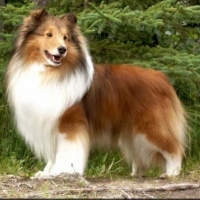
Your child finally asks for a pet, and you take him to the store so he can choose what he wants. When you get to the store your child notices this tiny little creature munching away on nuts and whatnot and covered all over with fur. Those small beady eyes stare at your child for a few moments and suddenly, your kid has found his first pet. Now, as a parent you ask yourself, is a hamster the right choice? Well, actually it is.
Starting off your child with a small pet, such as hamster, will save you from taking over most of the burden of taking care of a larger animal, say a dog, and help your child learn a little responsibility. Hamsters only require fresh food, water, cleaning the cage every week or so, and a little attention. Hamsters don't usually require grooming, unless of course the one you happen to buy is a Long-haired Syrian Hamster. Then you'd have to occasionally brush your pet to remove the shavings that get stuck in its fur. If you really want to make sure that you won't have to do any grooming, you can buy a Hairless Syrian Hamster, which is pink, hairless, and warm to touch.
Okay, so now you've bought the hamster for your child, then what? Usually, pet stores provide most of the accessories your hamster will need. First of all you will need a cage, one that isn't too small, or just enough to fit the hamster. It should be large enough so your hamster can move around freely and have space for his water bottle and/or feeding bowl. The floor covering is typically composed of wood shavings, such as aspen, but you can also use small animal litter. Material that tends to mould should be avoided for the general health of your pet. Hamster cages should be kept clean by replacing the floor covering weekly. Hamsters like to have "nesting areas" where they tend to sleep and hoard all their food. This can be made from torn-up toilet paper, or clean, non-moldy hay. Feeding hamsters can be done giving their food in feeding bowls, or by sprinkling them on the cage floor. Hamsters have these pouches in their cheeks where they stuff their food to carry back to their nesting area, so putting their food on the floor is a good idea so they won't have to tip over the bowl when they're hoarding. It also imitates the way they forage food in the wild. For water bottles it's better to get the ones with ball-bearing at the end of the tube and their water should always be kept fresh.
One necessary accessory in your hamster's cage is the exercise wheel. It provides your pet the exercise it needs especially when your child is preoccupied with other things to play with it. Keep in mind that exercise wheels can sometimes be noisy at night, because hamsters are naturally nocturnal and more active at night. Usually the above are all that's needed inside your pet's cage, but if you want to have more accessories for your pet, there are of course other toys available. A hamster ball is basically a hollow ball with holes, where you can put your hamster inside so he and your child can run around the house or yard without getting himself injured, of course it should be under supervision and the ball should be tightly sealed so it won't suddenly break open. Cardboard tubes, wooden blocks, and seesaws can also be placed inside the cage to provide even more exercise options for the little creature.
Having taken care of all that, always remember that all pets need to have veterinary attention at some point, more so in the case of hamsters as they can deteriorate quickly when they get ill. A healthy, well-taken care of hamster can live for about 2-3 years or so, and by the time it reaches the end of its lifespan, your child would probably be old enough to be able to take care of his own dog.
 8 Great Holiday Destinations For Cat Lovers
8 Great Holiday D
8 Great Holiday Destinations For Cat Lovers
8 Great Holiday D
 English Setter Hereditary Health And Longevity
English Setter He
English Setter Hereditary Health And Longevity
English Setter He
 Dog Food - How To Compare And Get Best Value For Money
The dog food topic is widely discussed nowadays and many
Dog Food - How To Compare And Get Best Value For Money
The dog food topic is widely discussed nowadays and many
 Dog Breeds: Grooming A Sheltie
There are standard guidelines for grooming any thick-coa
Dog Breeds: Grooming A Sheltie
There are standard guidelines for grooming any thick-coa
 Mange
I want to share a story with you regarding
Mange
I want to share a story with you regarding
Copyright © 2005-2016 Pet Information All Rights Reserved
Contact us: www162date@outlook.com